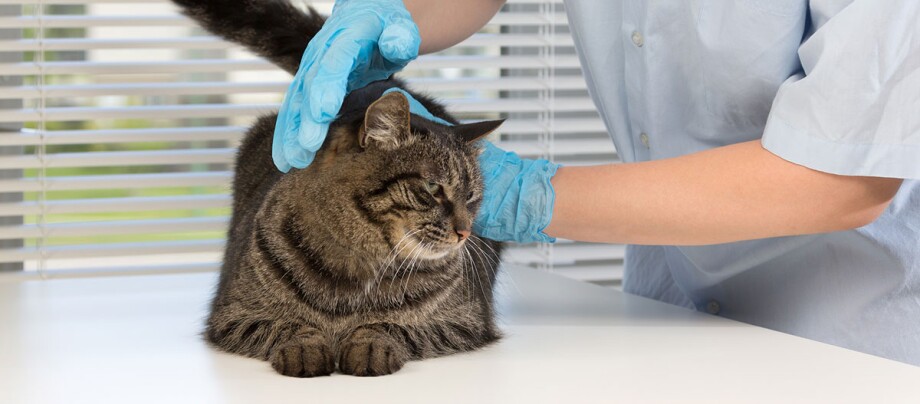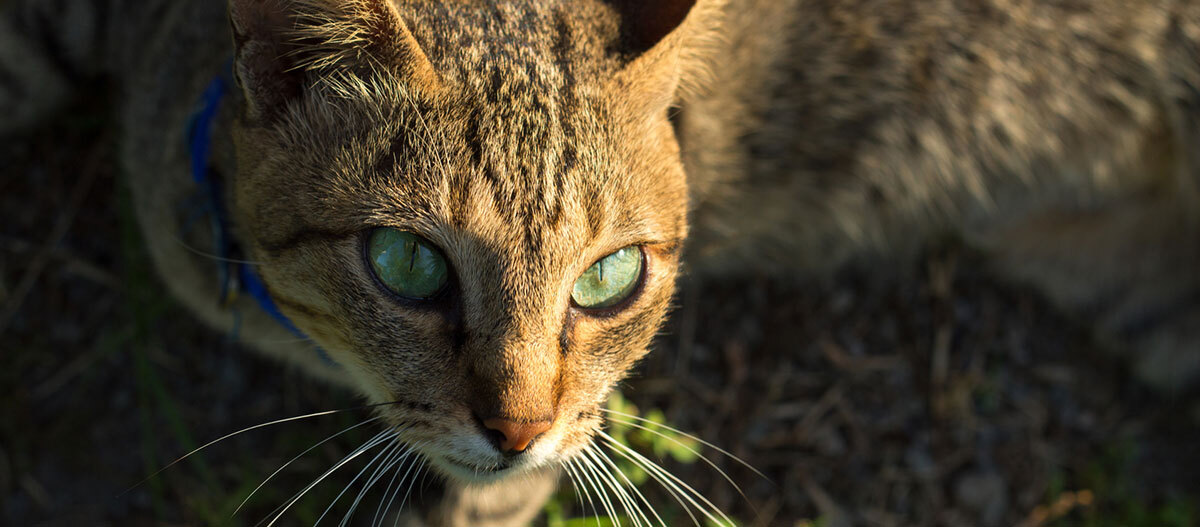Worms in Cats - How to Help Your Cat Against a Worm Infestation
17.10.2022 - Reading time: 4 minutes

A cat with worms is carrying living organisms inside that mate, reproduce, and lay eggs inside the body. For various parasitic worms, this is a success model that often comes at the cost of the host organism. A cat with a pathological worm attack will show various symptoms and health impairments.
How do worms parasitise cats?
Not even house cats are safe from worms: worm eggs can be carried into supposedly safe homes in a variety of ways, for example via shoes. Only one thing helps: periodic deworming. Worms can be passed to cats in various ways. Typically affected animals – it doesn’t have to be a cat – excrete worm eggs in their faecal matter. The transmission happens with direct contact with faeces or worm larvae, but also indirectly through mother’s milk or raw meat when cats are fed a BARF diet or root through the refrigerator. Flies and snails can also spread worm infections. The worms, larvae or their eggs can be absorbed orally as well as through the blood or skin.
The most common worms in cats are:
- Round worms, whose larvae can be transmitted orally through breast milk and can develop in the intestines into adult animals.
- Hook worms, whose eggs are spread in faeces, develop into larva in the outside world and infiltrate an organism through the skin where they then develop into egg-laying animals.
- Tapeworms, especially the cucumber tapeworm, can also be transmitted by fleas. Their larvae migrate through the blood from animal to animal. Additional routes of infection are prey like birds and small animals. Depending on the type of tapeworm, the parasites can be up to 80 centimetres long.
By the way: all of these types of worms can be transmitted to humans. The fox tapeworm is especially dangerous and is occasionally spread with cats as intermediate hosts. While this tapeworm causes hardly any symptoms in the cat, for humans it can cause severe liver damage. When your cat has a case of worms, pay careful attention to hygiene, medicinal remedies, and in case of doubt talk to your GP about a suitable countermeasure if you suspect an infection.

What affect do worms have on cats?
An infection with endoparasites like worms does not necessarily lead to an acute illness: an otherwise strong cat can sometimes function as an intermediate host for worms without being affected by the parasites themselves. Other cats suffer from worm illnesses that are medically known as helminthosis. What is crucial for an illness, along with the general health status of the cat, is the type of relevant worm. General symptoms are tiredness and fatigue, weight loss, neglect of the fur, for young cats often a bloated stomach. This can also include poor wound healing and susceptibility to other illnesses.
How can I deworm cats?
There is no vaccine protection against an infestation of worms. Cats, especially those who occasionally eat mice, should instead receive periodic deworming treatment. It is recommended that adult cats receive deworming medication on a quarterly schedule. For house cats, faeces should be tested for worms at least once a year and deworming treatment given if necessary. Discuss such measures with your vet. They have the right recommendation for the right preparation. For a deworming treatment, you don’t necessarily have to take the cat to the vet’s office: with new types of spot-on agents you can apply the dewormer yourself.
The effect of the current dewormers are:
- Round worms: cat faeces is of a paste-like consistency, fur can become rough or fall out, dehydration and weight loss can occur. For young animals, skeletal deformations, peritonitis and in the worst case intestinal obstructions are possible.
- Hook worms parasitise the small intestines. There they bite into the mucous membrane and feed on blood. Possible symptoms are emaciation, anaemia and diarrhoea.
- Tapeworms feed on the bolus in the digestive tract and deprive the body of the cat of nutrients. This results in loss of appetite, weight loss and shaggy fur. Tapeworm parts are eliminated rectally, causing severe itching which the animal tries to relieve by sliding around on their backside.
What should I bear in mind with regard to dewormer for cats?
You can sometimes recognise a worm infestation with your own eyes – namely, when you are cleaning the cat’s litterbox and you discover dead or even still moving worms and parts of worms. Even vomit from the house cat can be permeated with worms that can be seen with the naked eye. The vet can use faecal samples to verify which worm the cat is infested with and initiate the appropriate treatment. This consists of administering an antihelmintic, referred to colloquially as a “dewormer”. The agent included in these remedies kill the adult and worms and any possible larva stages. In order to eliminate all generations of a worm population, a deworming treatment must possibly be repeated. Kittens can be infected with worms from the mother’s body or from the mother’s milk. However, it is important that pregnant cats, and later, the kittens are treated with a suitable dewormer. Before an upcoming vaccination, animals with a heavy worm infestation should first undergo deworming treatment – an extreme case of worms can impair the effectiveness of the vaccine.



